Aquifoliaceae: Ilex glabra (L.) Gray
(Inkberry, Gallberry)
This shrub is a member of the coastal plain flora and is most common in the southwestern part of the province. Roland and Smith (1969) describe the habitat for Inkberry in Nova Scotia as "very varied", the species occurring on "rocky barrens, swamps, dense spruce woods, and even on dry hillsides". Inkberry has distinctive leathery leaves with several teeth at the tip. Of the three species in the holly family native to Nova Scotia, inkberry is the only one to retain its leaves over winter. Small, creamy white, 6-parted, flowers are produced in mid-summer in Nova Scotia. The species is dioecious; male flowers occur in clusters, and female flowers individually on separate plants. The fruit is a black drupe.
Sources | Selected Web Resources | Line Drawing
Click on images for larger versions.
|
January 10 & 22, 2009. Lunenburg County: Grimm Road bogs. Photographer: Ocotillo. |
 |
 |
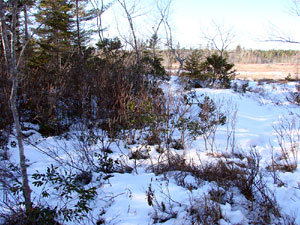 |
 |
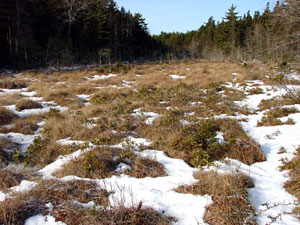 |
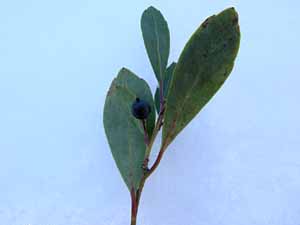
|
|
February 11, 2007. Halifax County: Peggy's Cove area (Chebucto Peninsula). Photographer: JackPine. |
||
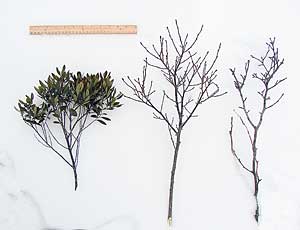
Inkberry, Canada holly, false holly. |
 | |
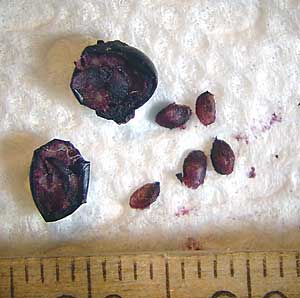 |

|
|
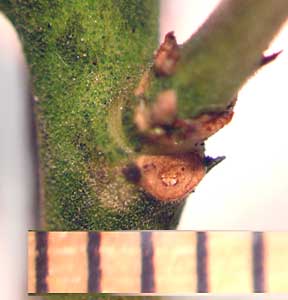 |
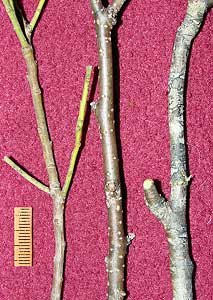
Inkberry, Canada holly, false holly. | |
|
March 6, 2006. Halifax County: Bog at Polly's Cove (near Peggy's Cove). Photographer: JackPine. |
|

Evergreen leaves of Inkberry stand out in winter. 
|
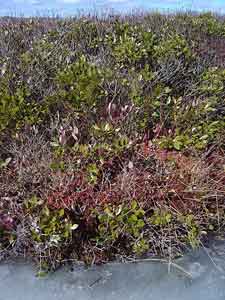
|
|
June 22, 2006. Halifax County: Bog at Polly's Cove (near Peggy's Cove). Photographer: JackPine. |
|

|
|
|
July 6, 2006. Halifax County: Bog at Polly's Cove (near Peggy's Cove). Photographer: JackPine. |
|
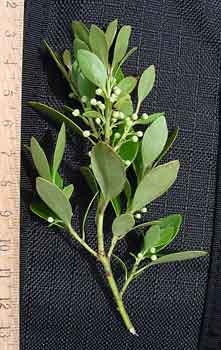
|
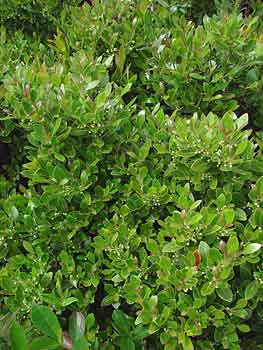
|
|
July 16, 2006. Halifax County: Bog at Polly's Cove (near Peggy's Cove). Photographer: JackPine. |
|
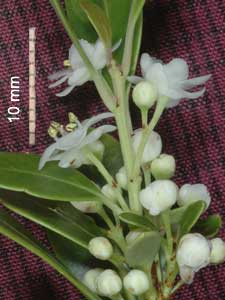 Male flowers. |
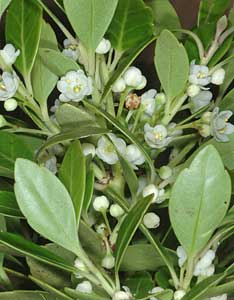 |
|
August 19, 2006. Halifax County: Bog at Polly's Cove (near Peggy's Cove, Chebucto Peninsula). Photographer: JackPine. |
|

|
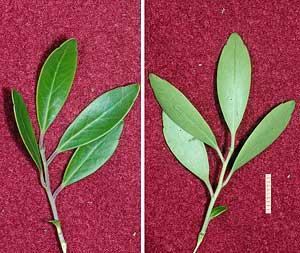 Bar is 1 cm. |
Selected Web Resources
- Taxonomic Status (ITIS) Copy the species name above and paste it into a form on this ITIS Canada page to confirm the nomenclature and list synonyms.
- NatureServe Explorer Copy the species name above and paste it into a form on this page to view a map of its distribution within North America and its conservation status by province and state.
- Fire Effects Information System Referenced overview of botanical and ecological characteristics, fire ecology, managment.